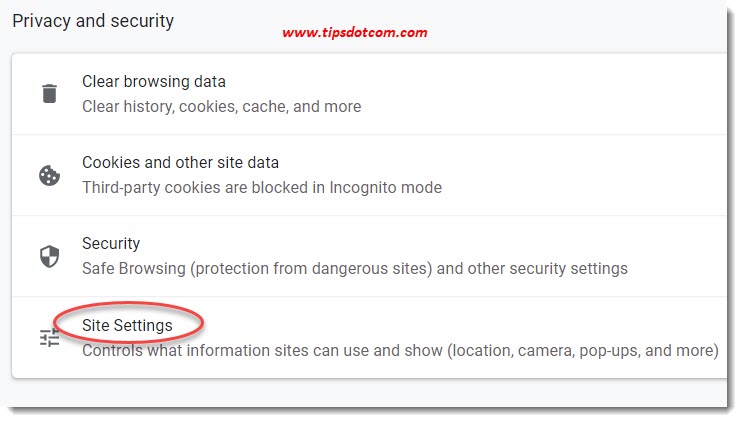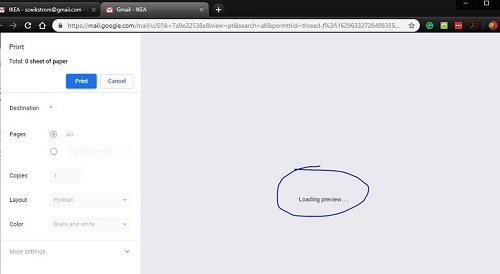

- Google chrome print window immediatly closes update#
- Google chrome print window immediatly closes driver#
- Google chrome print window immediatly closes manual#
- Google chrome print window immediatly closes Patch#
Given that this issue relates to how Windows installs feature-level components, Microsoft recommends reinstalling any language packs.
Microsoft has probably published the most interesting update and deployment and packaging article ever to be included in the middle of a long technical article related to packaging and updates. PSFX is a differential compression mode used in reducing the size of Microsoft updates.
After installing KB4493509, devices with some Asian language packs installed may receive the error "0x800f0982 -PSFX_E_MATCHING_COMPONENT_NOT_FOUND". To resolve this issue, use the following command: "Manage-bde –Protectors –Disable C: -RebootCount 1." Then deploy the update and reboot. Unfortunately, if BitLocker is enabled with the PCR7 binding, this update may fail. The KB5012170 update adds modules to the DBX in an attempt to address a vulnerability that exists in the secure boot loader process. The Secure Boot Forbidden Signature Database (DBX) prevents UEFI modules from loading on systems with the Unified Extensible Firmware Interface ( UEFI ). This month, there are some really complex changes: Noting that for each of these testing scenarios, a manual shut-down, reboot and restart is suggested, with a focus on Boot Manager entries in the event viewer logs.Įach month, Microsoft includes a list of known issues that relate to the operating system and platforms that are included in this update cycle.
You will have to know C++ or C# and you will need the Windows Driver kit ( WDK ). Given the changes to the SSU, Windows Boot Manager and updates to the Windows kernel (WIN32KY.SYS) this month, it may be worth having a look at some Microsoft testing platforms such as the Microsoft Test Authoring and Execution Framework ( TAEF ). This applies to all supported versions of Microsoft Office. Specifically for Outlook, we recommend testing with a Gmail account and then switching to a Microsoft account test sending invites between accounts.
Microsoft Office Updates: We recommend a general " smoke " test for all updated Microsoft Office products this month. I can't share the exact API changes, but I suggest you scan your applications (and subsequently test) for any references for IDCompositionDevice3. There was an API update this month that will require testing for internally developed applications. DirectComposition : This Windows component allows for rapid bitmapping and animations. They were a cool way to address directory redirect requirements through the registry - and are definitely not needed in a modern desktop. Here's a hint: avoid FAX drivers, and don't use junctions. This month's update is actually pretty cool it addresses a vulnerability in junctions, which I have not used since the early 2000's. 
 Microsoft FAX : Like printing, we now have to test enterprise FAX services with each Patch Tuesday update. The following updates are not documented as functional changes, but still require a full test cycle: It doesn't look like this update will take down any servers, printer server or otherwise. Web Printing: Though there do not appear to be any functional changes, Microsoft has updated how web documents (HTML and JPEG) are printed. Microsoft provided a handy reference to Windows Boot Manager event viewer files found in KB5016061. The changes included for August will require reboot testing to collect/collate and then parse event viewer logs. I have written a brief explainer that details some of the ways that Microsoft " updates the update process " and how its servicing stack has moved to a singular, combined update each Patch Tuesday. Service Stack Update: There is a significant change to the Microsoft Servicing Stack ( SSU ). High Risk: These are likely to include functionality changes, may deprecate existing functionality and will likely require creating new testing plans: Given the large number of changes included in this August patch cycle, I have broken down the testing scenarios into high risk and standard risk groups:
Microsoft FAX : Like printing, we now have to test enterprise FAX services with each Patch Tuesday update. The following updates are not documented as functional changes, but still require a full test cycle: It doesn't look like this update will take down any servers, printer server or otherwise. Web Printing: Though there do not appear to be any functional changes, Microsoft has updated how web documents (HTML and JPEG) are printed. Microsoft provided a handy reference to Windows Boot Manager event viewer files found in KB5016061. The changes included for August will require reboot testing to collect/collate and then parse event viewer logs. I have written a brief explainer that details some of the ways that Microsoft " updates the update process " and how its servicing stack has moved to a singular, combined update each Patch Tuesday. Service Stack Update: There is a significant change to the Microsoft Servicing Stack ( SSU ). High Risk: These are likely to include functionality changes, may deprecate existing functionality and will likely require creating new testing plans: Given the large number of changes included in this August patch cycle, I have broken down the testing scenarios into high risk and standard risk groups:







 0 kommentar(er)
0 kommentar(er)
